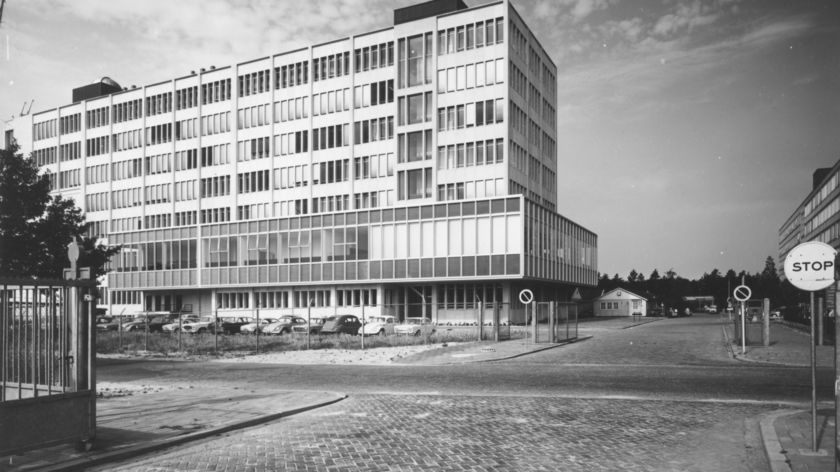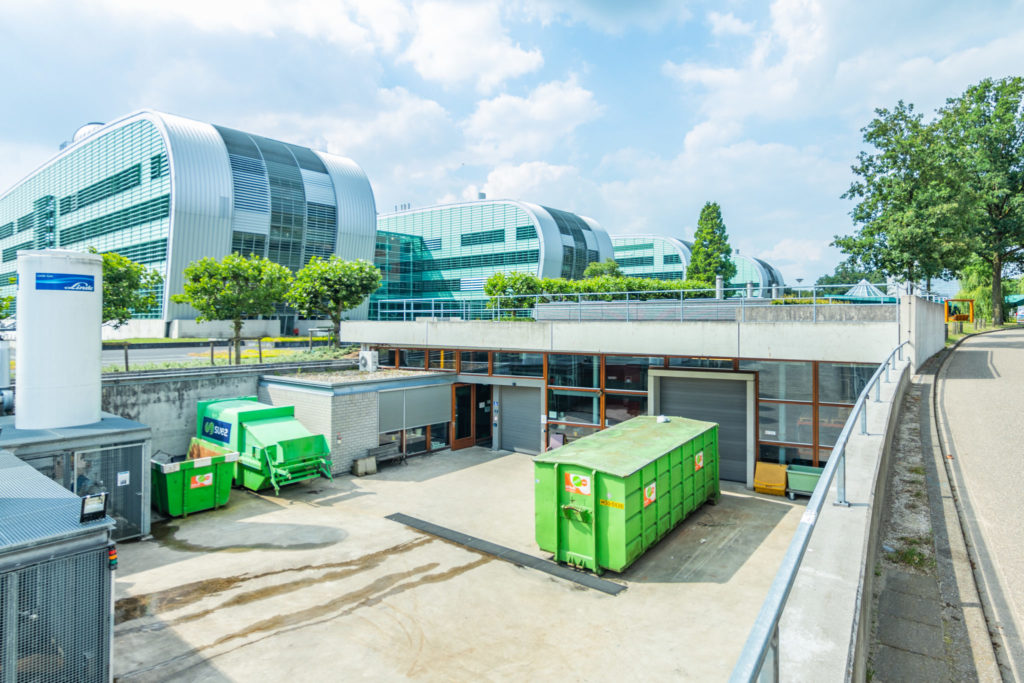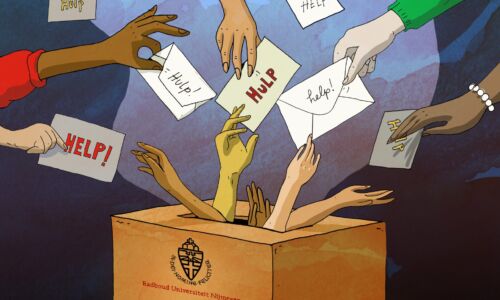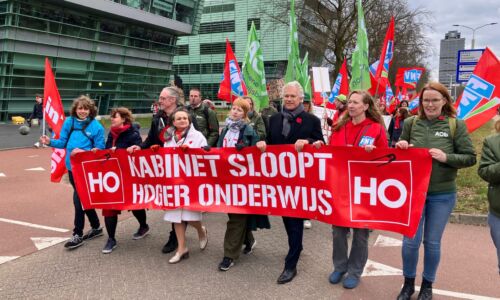Then & Now (8): the Universal Lab of the Faculty of Science in 1969
-
 Photo: Regionaal Archief Nijmegen
Photo: Regionaal Archief Nijmegen
In the olden days the university didn’t have a campus, and its buildings were spread all over town. To commemorate Radboud University’s 95th anniversary, VOX hit the archives. What’s changed? Today: the science faculty.
In 1957 the Roman Catholic University opened its fifth faculty, enabling physicists to come study in Nijmegen as well. After a disadvantaged neighbourhood had been demolished, a temporary building was erected. This building remained standing much longer than planned.
The Kluckebuurt
Not long after the official opening of the medical faculty’s hospital in 1956, construction was begun on the science faculty of Nijmegen University. Biology was first on the list as accommodating this department required the least preparation. In 1957 a temporary space was constructed on the Gerard van Swietenlaan.
The location of the definitive science building was the so-called Kluckebuurt, a disadvantaged neighbourhood with 54 small working-class houses, a social workshop, a couple of small shops and the youth centre De Graalburcht. When the entire neighbourhood was demolished in the 1960s only De Graalburcht remained. Until 2010 this building housed student parties, a soundproof room for Professor of Plant Sciences H. Linskens, a storeroom and a diesel lab for the department of molecular and laser physics.

The Universal Lab
Due to the rapid growth in the number of biology students, the temporary biology facility quickly became too small. Plans for a new building were thus moved forward to 1959, and the programme of studies would be given in the Universal Lab on the Heyendaelseweg (see photo). When the building was completed in January 1960, it also housed physics, mathematics, chemistry and management offices. The Universal Lab was not built for the long term; it was a very inexpensive and flexible building in which none of the interior walls had a sturdy, supporting function. The plan was to have all of the institutes start here and then move to definitive locations within ten years. But it took until 2007 until the building was replaced by the Huygens building even though there were always problems: recurrent moth plagues and a ventilation system and fire safety that no longer met the legal standards.
More lab work
At the end of the 1960s and the beginning of the 1970s, mathematics and physics and then chemistry and biology left the Universal Lab after a lengthy delay and moved to the new Transitorium and N-building. The number of science students had risen enormously: from 16 students in 1957 to 1400 in 1969.
Physicist and faculty director C. Aarts was initially positive about the future, but that changed in the 1970s. The government gradually decreased funding, and the faculty was challenged by the changed nature of the studies. Biology, for example, involved more and more lab work and the demands changed. Nevertheless, efforts undertaken in this period did result in a high field magnet lab. On the other hand, the new building for chemistry, opened in 1982, proved much smaller than expected. This faculty is now housed in the modern Huygens building, which better meets the diverse demands of science programmes.
With thanks to university historian Jan Brabers. Marjolein van Diejen took the ‘now’ photo. ’Then’ photo: Regional Archive Nijmegen.
Sources: Rob Wolf, De Trek naar het zuiden: gebouwen van de Katholieke Universiteit Nijmegen 1923-1998 (Nijmegen 1998) and Radboud University.



